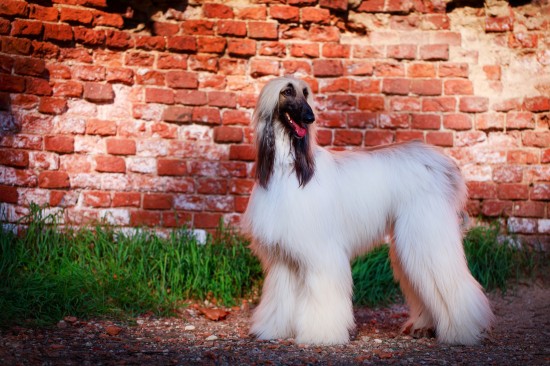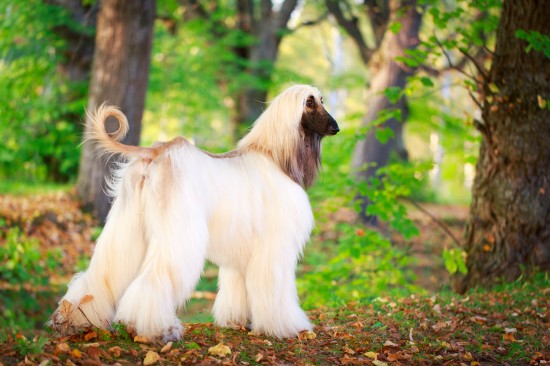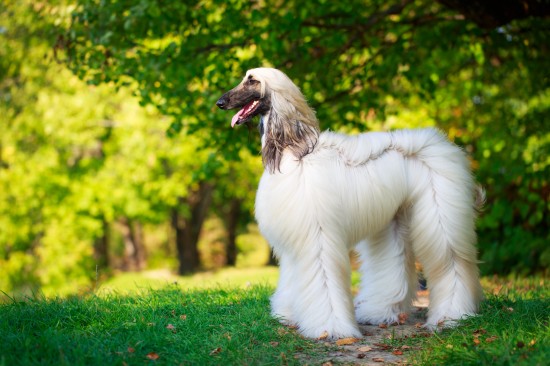



The tall, sleek and elegant Afghan hound is one of the world’s oldest recognised dog breeds, and one that was traditionally used as a working sighthound that will naturally pursue prey with no training required. Due to their lithe, long legged build and beautiful long flowing coats, the Afghan hound is a very attractive looking dog, and one that many people aspire to own as a pet and companion. However, the Afghan hound’s coat requires a significant amount of daily care and ongoing maintenance to keep it in good condition, and keeping up with the demands of their grooming and care can be quite the challenge!
Added to this, the breed as a whole is one that possesses a reasonable number of hereditary and genetic health problems, which may present issues for individual dogs of the breed. If you are considering buying a pedigree Afghan hound, it is of course important to make sure that you are aware of the potential issues that can accompany ownership of the breed before committing to a purchase. In this article, we will look at the longevity, basic breed-specific care requirements and hereditary health of the breed in more detail. Read on to learn more.
The core consideration to bear in mind when you are thinking about buying an Afghan hound is whether or not you will be able to keep on top of the care requirements of their long coats. The Afghan hound is a large dog with very long hair, which will soon become knotted and matted if left to its own devices, which can lead to a wide range of problems. Potential Afghan hound owners should ensure that they can commit to prolonged periods of brushing and grooming the dog, daily coat care, and a significant amount of ongoing maintenance to keep the dog’s coat and skin in good condition.
The median lifespan for Afghan hounds within the UK is 12 years, which is around the middle of the pack when compared to other pedigree dog breeds of a similar size. Afghan hounds that die of old age rather than due to health problems and complications average a lifespan of between 13-14.5 years.
The coefficient of inbreeding statistic for the Afghan hound breed is 7.7% across the breed as a whole, which is generally accepted as a low enough figure to not cause any significant problems for the dog.
In terms of conformation, the shape of the head and eyes of the breed may potentially lead to a problem called medial canthal pocket syndrome, which leads to dirt and debris collecting in the corners of the eyes, potentially leading to irritations and infections.
The British Veterinary Association recommends hip score testing for potential parent dogs of the breed, in order to identify a propensity to hip dysplasia prior to breeding. The mean hip score for the Afghan hound breed as a whole is 11, and dogs intended for breeding should ideally receive a hip score lower than this in order to be considered to have a good score, and improve the breed’s hip health as a whole.
The main cause of death reported for the Afghan hound breed as a whole is cancer, with various different types of cancer being reported across the breed. The second cause of death for the breed as a whole is listed as simple old age. Some of the potential health problems that may affect the Afghan hound, and which have been identified to have a breed-specific hereditary element to them include:
Copyright © 2005-2016 Pet Information All Rights Reserved
Contact us: www162date@outlook.com